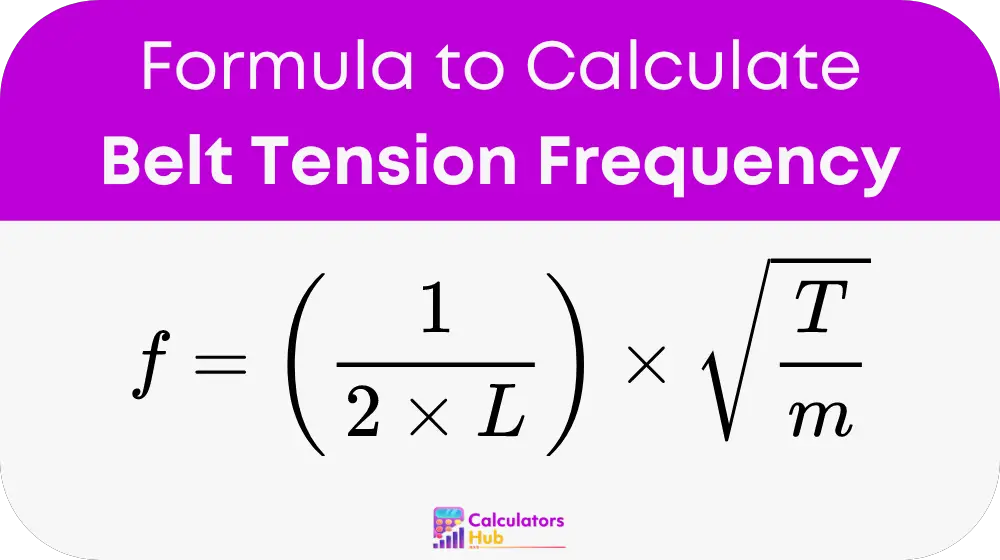The Belt Tension Frequency Calculator is a tool used to determine the frequency at which a belt vibrates due to its tension. This frequency is crucial for the proper functioning and longevity of machinery that relies on belt-driven systems. Understanding belt tension frequency helps in diagnosing issues such as excessive vibration or noise, which can indicate problems with belt tension or alignment.
This calculator is widely used by engineers, technicians, and maintenance professionals to ensure that belts in mechanical systems operate smoothly and efficiently. By calculating the frequency, users can make informed adjustments to the tension of the belt to optimize performance and prevent potential failures.
Formula of Belt Tension Frequency Calculator
The formula to calculate belt tension frequency is:

Where:
- f is the belt tension frequency, measured in hertz (Hz).
- L is the span length of the belt, measured in meters (m).
- T is the tension in the belt, measured in newtons (N).
- m is the mass per unit length of the belt, measured in kilograms per meter (kg/m).
This formula calculates the natural frequency of the belt based on its physical properties and the tension applied to it. Accurate measurement and input of these values are essential for obtaining a precise frequency calculation.
General Terms Table
Below is a table that includes common terms and their typical values, which are often encountered when using the Belt Tension Frequency Calculator. This table can assist users in understanding and applying the calculations without performing each conversion manually.
| Term | Description | Common Values |
|---|---|---|
| Belt Span Length (L) | The distance between the centers of the pulleys, measured in meters. | 0.5 m, 1 m, 2 m |
| Belt Tension (T) | The force applied to the belt, measured in newtons. | 100 N, 200 N, 500 N |
| Mass per Unit Length (m) | The weight of the belt per meter, measured in kilograms per meter. | 0.1 kg/m, 0.2 kg/m, 0.5 kg/m |
This reference table provides a quick overview of typical values used in belt tension frequency calculations, making it easier for users to input relevant data.
Example of Belt Tension Frequency Calculator
Consider a scenario where you need to calculate the belt tension frequency for a system with the following parameters:
- Belt Span Length (L): 1 meter
- Belt Tension (T): 200 newtons
- Mass per Unit Length (m): 0.2 kilograms per meter
Calculation
Using the formula:
f = (1 / (2 * L)) * √(T / m)
Substitute the values:
f = (1 / (2 * 1)) * √(200 / 0.2) = 0.5 * √1000 = 0.5 * 31.62 = 15.81 Hz
The belt tension frequency is 15.81 Hz. This frequency indicates how often the belt will vibrate under the given tension and mass per unit length. Monitoring this frequency can help ensure the belt operates smoothly and efficiently.
Most Common FAQs
The tension in the belt directly influences its vibration frequency. Higher tension generally increases the belt’s frequency, while lower tension decreases it. Proper tensioning is crucial for maintaining the desired operating frequency and preventing issues such as excessive vibration or noise.
If the calculated belt frequency is outside the expected range, it may indicate that the belt is too tight or too loose. Adjust the belt tension accordingly to bring the frequency into the desired range. Additionally, check for other issues such as belt wear or misalignment, which can also affect frequency.
The Belt Tension Frequency Calculator is applicable to various types of belts, including V-belts and flat belts. However, ensure that the belt's mass per unit length and tension values are accurately measured for precise calculations. Different belt types may have varying characteristics that affect their vibration frequencies.